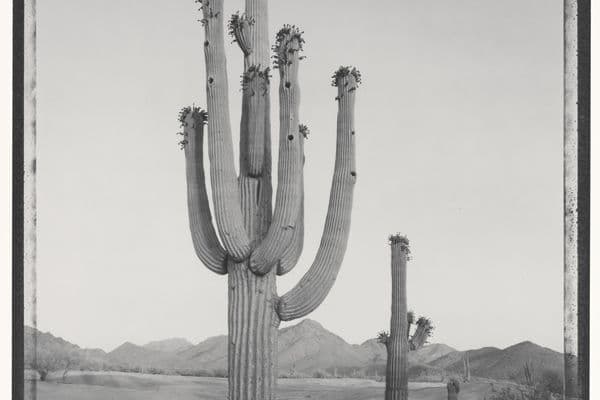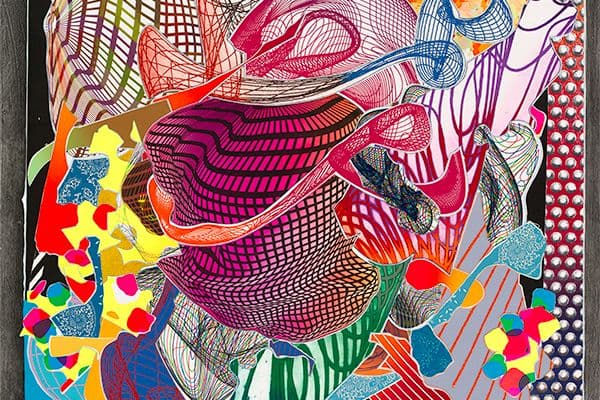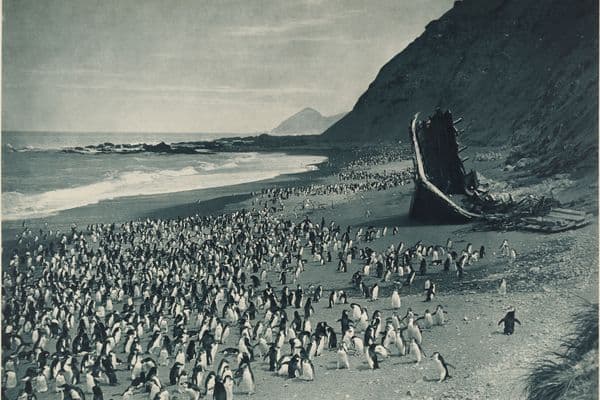The Dark Side
American Photography 1930s–1970s
9 Feb – 2 Jun 1985

Weegee, Dove (The Beetle) Beadle put on spot, under the "spot" on 10th Ave., (c. 1940), National Gallery of Australia, Kamberri/Canberra, Purchased 1981.
About
The six photographers in this exhibition share an interest in the darker aspects of life. Theirs is not the golden vision of the American dream but a dark, disturbing urban world. New York City is the dominant place in the photographs, the ultimate modern metropolis. All six photographers have worked there for some time during their careers.
The content on this page has been sourced from: Ennis, Helen. The Dark Side : American Photography 1930s-1970s, Gallery 11, Saturday, 9
Weegee (Arthur Fellig)
Weegee, born Arthur Fellig, emigrated from Austria to New York City in 1909. Like most migrants he grew up in tenement housing, with his father (later a Rabbi) receiving irregular and poorly paid employment. Arthur Fellig, however, became a star.
In 1935 he began to freelance as a photographer and found a ready market in the New York tabloid newspapers for his photographs, especially of murders and accidents. His exhibition at the Photo League in New York in 1941 was titled 'Murder is my business'.
Weegee roamed night-time New York in his Chevrolet coupé equipped with police radio. He was nicknamed Weegee, a reference to the ouija board, because of his allegedly psychic powers in arriving at the scene of various urban catastrophes before the police and other authorities.
Photographing at night, Weegee flooded the scenes with brilliant flash light making them look unreal, like film sets. Yet a close examination of the photographs reveals the most ordinary details—death occurs in the streets without ceremony, without in fact anyone even seeming to care. Weegee often takes a flippant stance. For example, he entitled his photograph of a murder victim Dove (The Beetle) Beadle put on spot under the "spot", punning on the street sign for The Spot Bar and Grill.
The dramas Weegee photographs dispassionately are spectacles occurring 'out there', independently of us. It is a fascinating but often sordid world about which we know little, but which, through photographs, we may enjoy visiting.
With the publication of his book The Naked City in 1945 Weegee became a celebrity earning the self-endowed title of 'Weegee the famous!' He moved to Hollywood the following year and until his death was caught up in replaying the legend of himself as a star.
John Gutmann
John Gutmann was also an immigrant to the United States. He fled Germany in 1933, the year Adolf Hitler and the National Socialists came to power, and settled in San Francisco where he supported himself as a photojournalist and art teacher.
For Gutmann, America was an exotic place, "its crazy oddities were beautiful and refreshing". He was fascinated by the freedom and eccentricities of American public behaviour so different from that in Europe with its historical precedents and tightly structured society.
Gutmann generally photographed those things which seemed peculiarly and flamboyantly American—cars (the symbol of material wealth), drive-in restaurants, parades and social gatherings.
However, there is a haunting and often menacing aspect to his photographs. This arises from the combination of things not normally seen together. In Indian high school band, 1937, the man wearing a cross-shaped sticking plaster on his cheek is next to a musician holding a brass horn. The effect is strange and works in a way which we cannot exactly specify.
Robert Frank
Swiss-born Robert Frank enjoyed a successful career as a commercial photographer in Europe during the 1940s and early 1950s. His fashion and advertising photographs were published in numerous magazines including Harper's Bazaar and Life. In 1955 he was awarded a prestigious Guggenheim Fellowship which funded his epic journey across the United States during 1955 and 1956.
This was the McCarthy era which has since been described as one of the most shameful periods in American history. Senator Eugene McCarthy and the House Committee of Un-American Activities investigated the lives and careers of numerous American citizens branded as communists and subversives. The actor Charlie Chaplin, for instance, was forced into exile in Switzerland in 1952. Robert Frank later recalled:
Seeing those faces, those people, the kind of hidden violence—the country at that time—the McCarthy period—I felt it very strongly.
The resulting photographs were rejected by American publishers and were published in France in 1958 in the book Les Américains. The text by French poet Alain Bosquet combined with Frank's photographs to present an anti-American viewpoint. For example Bosquet wrote:
Abstraction is forbidden to you and consequently wit. More or less ordinary people (car, television etc.) to whom I talked about poetry all told me, “nice hobby”. If I insisted that it was more, they asked me, “How much do you make doing that?"
When the book was published in the United States in 1959, Bosquet's text was replaced with a celebratory foreword by American writer Jack Kerouac, author of the novel On The Road.
Frank's stinging photographs were an affront to the tastefulness and acceptability of the sentimental images of The Family of Man exhibition, the most prominent photographic event of the 1950s. The people in Frank's photographs are small within the large dark spaces of the city or the landscape. He used the conventions of the snapshot – its arbitrary framing, casualness and graininess – to give an edginess to what he saw and felt.
Lisette Model
Lisette Model was born in Austria and moved from Vienna to Paris in 1922. Her first photographs, taken in 1937, were of gamblers and vacationers on the French Riviera. The following year she immigrated to New York City where she worked until her death in 1983.
Model’s subjects were those whom she described as ‘extremes’ or ‘exaggerations’. While she photographed people such as an individual with dwarfism and a gender-bending burlesque performer, this was from interest; she did not view them unkindly. Her photographs are large in scale, often enlargements up to 50 x 60 centimetres. The prints are dark and grainy (due to the size of the enlargements) which enhances their rough, raw quality.
From the mid 1950s Model concentrated on teaching photography at the New School for Social Research in New York. She had a significant influence on her student Diane Arbus, who has become something of a cult figure since her death in 1971.
Diane Arbus
Diane Arbus was born into a wealthy Jewish family which owned a large department store on Fifth Avenue in New York City. She began her career as a fashion photographer with her husband Allan Arbus, contributing to various magazines including Glamour and Seventeen.
Around 1956 she ceased fashion photography and a year later studied photography with Lisette Model.
For Arbus the camera was 'a kind of license' taking her into new and forbidding realms. Photographing society‘s outsiders marked her attempt to make contact with something more 'real' than the artificial world of high fashion. In Arbus's own words 'freaks were born with their trauma. They’ve passed their test in life. They're aristocrats'.
In 1962 she began to use a medium format camera, often with a tripod and attached flash. This equipment required a relatively slow and deliberate working method. She approached her subjects for consent to be photographed, frequently arranged to meet them elsewhere, and in some cases became friends with them.
The collaboration between Arbus and her sitters gives the photographs their psychological charge. They tap our primitive curiosity about other peoples' lives enabling us to look closely at them, often within the privacy of their own rooms.
During the 1960s many of these seemingly private portraits were published in magazines such as Esquire and Harper's Bazaar, sometimes with Arbus's extended captions.
Arbus's strongest photographs are extremely economical, like Boy waiting to march in a pro-war parade, New York. The lack of extraneous details gives a heightened presence to those elements which are included, in particular the boys face and his badges. Arbus also favours the close-up so the subject dominates the frame, appearing larger than life. This effect is more obvious in those prints which, like Model's, are substantial enlargements.
As with Frank's photographs of the 1950s Arbus's photographs have gained an added potency with time. They now seem emblematic of American experience of the late 1960s when, in the words of John Szarkowski (Director of Photography, Museum of Modern Art, New York), the Vietnam war 'brought to us a sudden, unambiguous knowledge of moral frailty and failure’. It is this awareness and resultant sense of despair which pervades Diane Arbus’s work.
Larry Clark
Unlike the other photographers in the exhibition Larry Clark works from within a sub-culture. He was a participant in the drug scene he photographed in the 1960s.
Clark grew up in Tulsa, Oklahoma and moved to New York City in 1964 intending to freelance as a photographer. However he was drafted into the United States Army and served in Vietnam from 1964 to 1966. During the late 1960s he lived in New York and returned periodically to his hometown to complete the photographs which were published in his book Tulsa in 1971. In the foreword he wrote:
i was born in tulsa oklahoma in 1943. when i was sixteen i started shooting amphetamine. i shot with my friends everyday for three years and then left town but i've gone back through the years. once the needle goes in it never comes out.
In photographing his friends and often himself, Clark does not resort to sentimentality or moralizing. A number of those photographed have since died from drug abuse. His photographs work within the tradition of documentary photography – they are not set up, but taken as things happen. The prints are unmanipulated, contributing to the direct, hard-hitting effect.
The concern with the darker side of life shared by the photographers in this exhibition is a continuing preoccupation of many contemporary artists.











